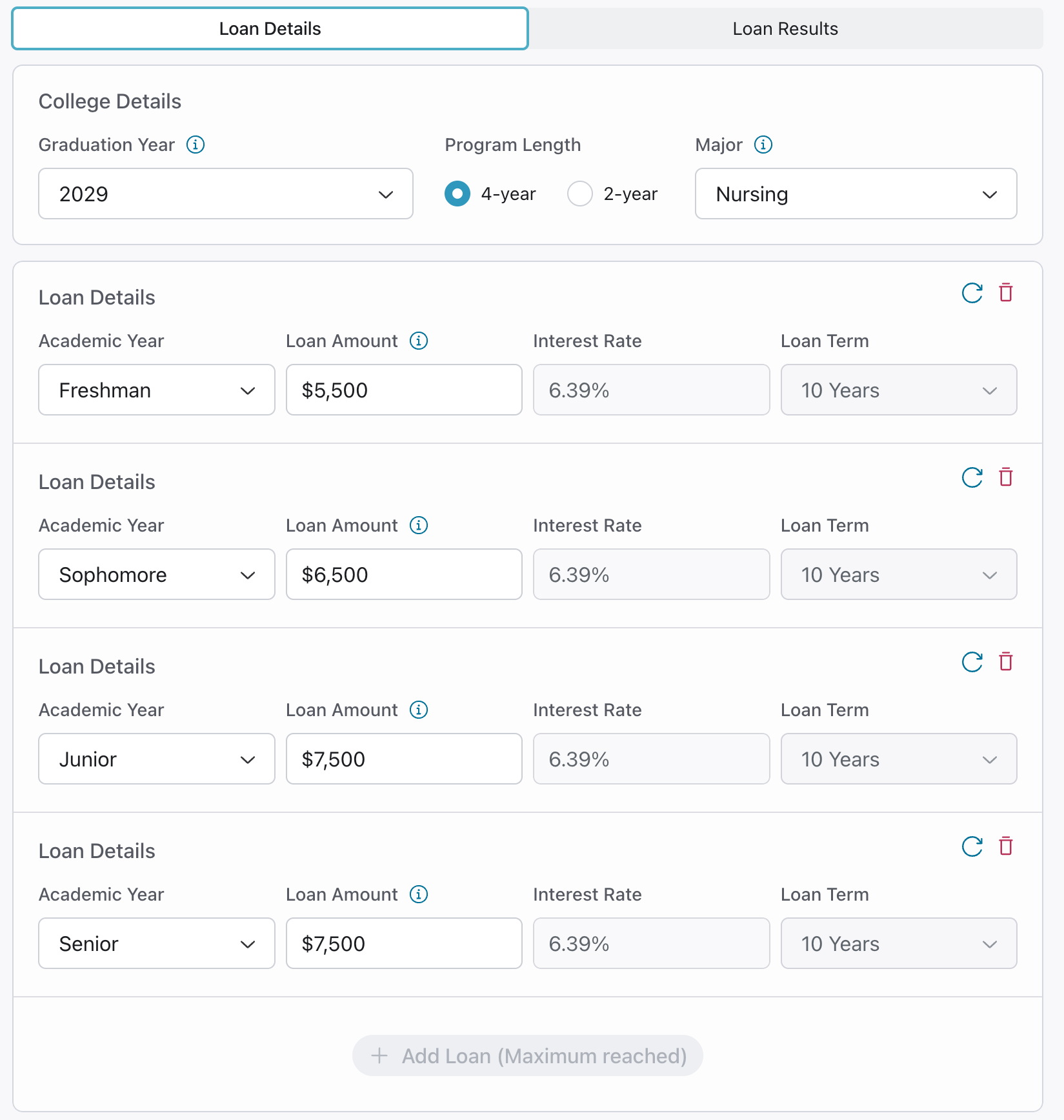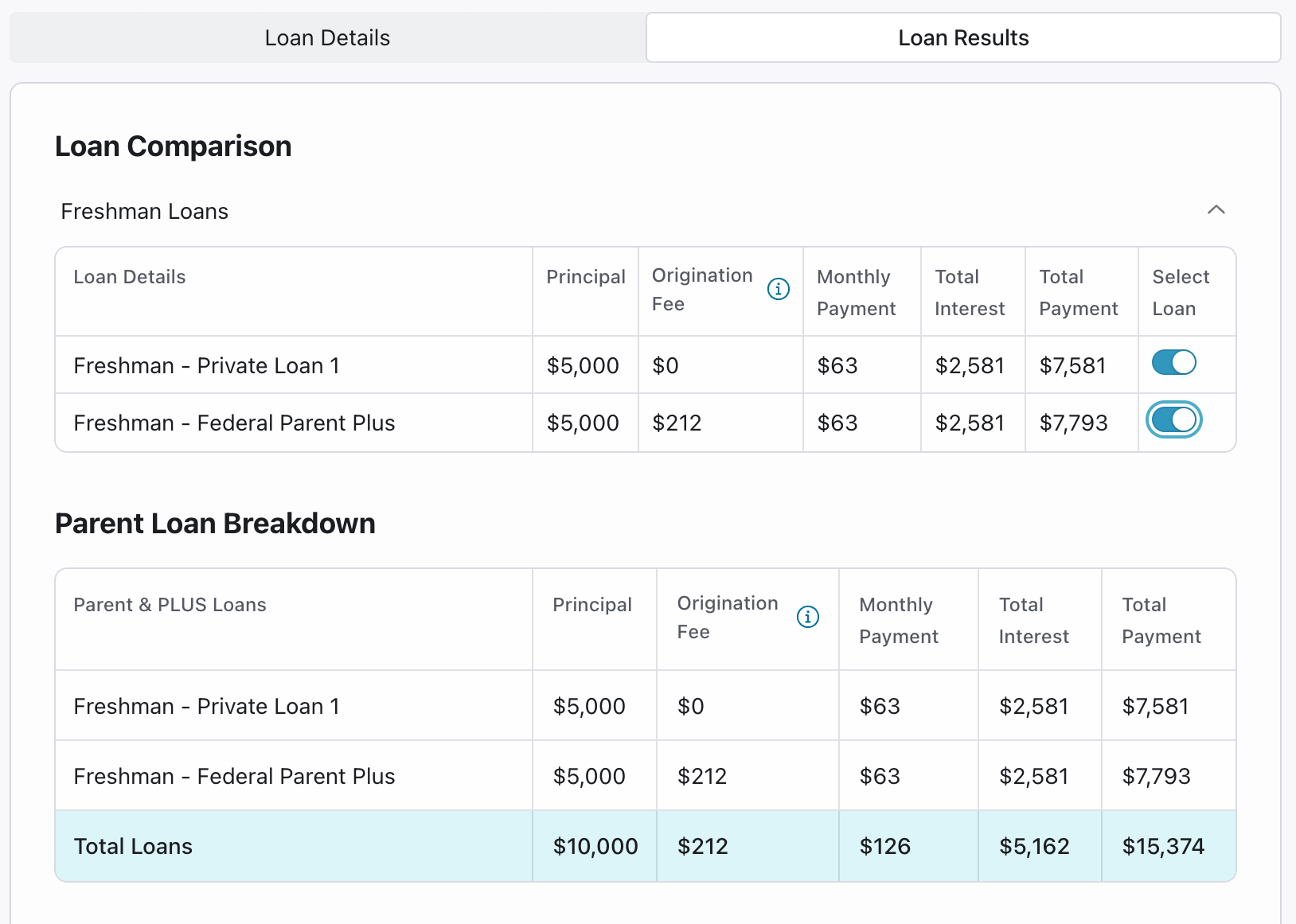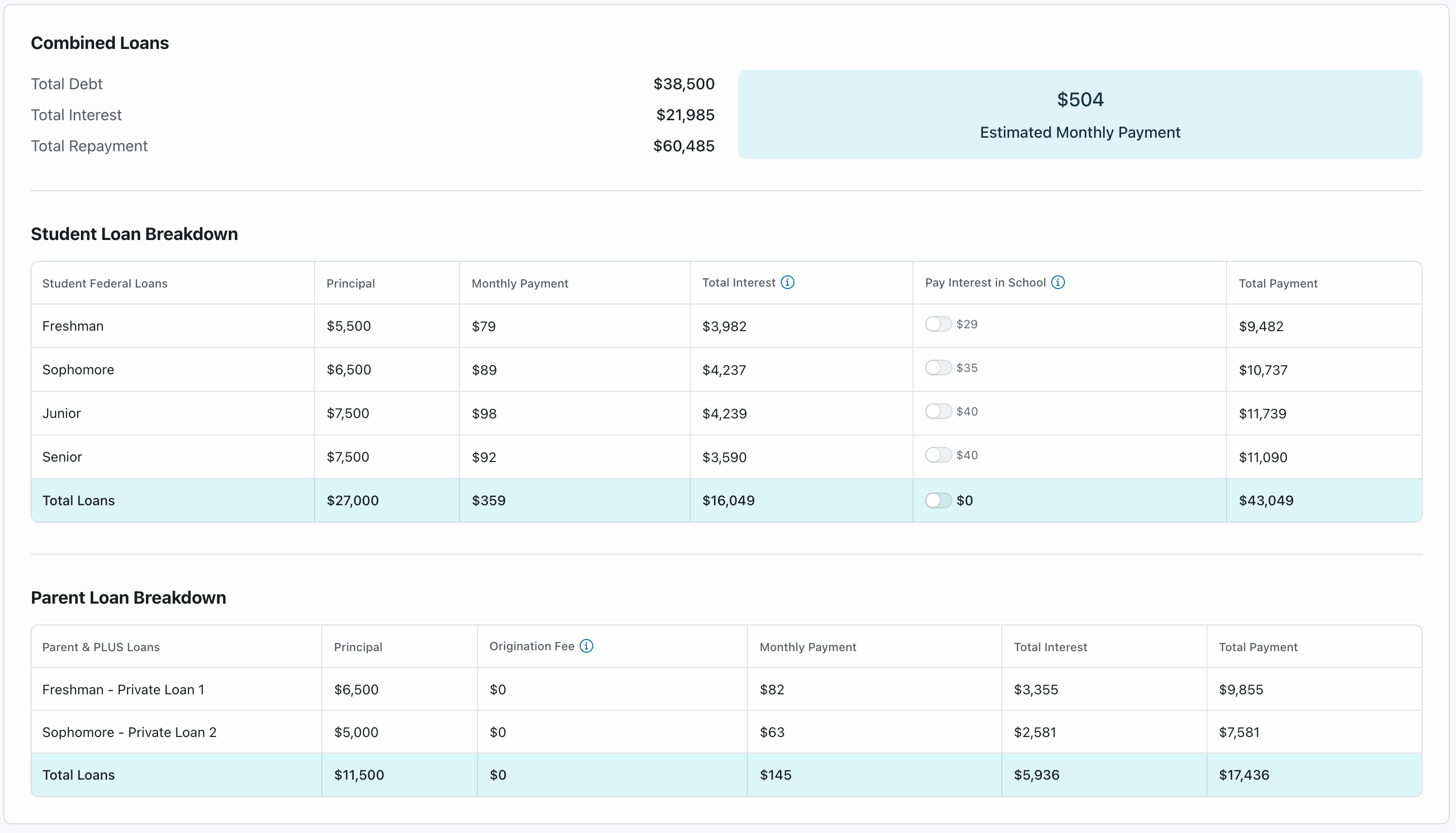Key Points
- The College Investor’s “How Much Student Loan Debt Can You Afford” calculator allows students and parents to see the final cost of their student loan borrowing.
- Families can toggle between Federal, Parent PLUS, and private loan options to understand long-term repayment costs.
- The tool highlights the effect of interest, repayment terms, and in-school payments on monthly payments after graduation.
Paying for college often means borrowing student loans, but families rarely get a clear picture of how much debt is reasonable before committing. The College Investor’s new interactive calculator, the How Much Student Loan Debt Can You Afford Calculator, aims to close that gap.
The tool goes beyond simple loan estimates by linking borrowing amounts to projected earnings after graduation, based on the student’s major. By inputting graduation year, program length, and field of study, students and parents receive tailored insights into whether their debt load will be manageable compared with expected salaries.
For example, a student majoring in finance and graduating in 2029 could expect an average starting salary of about $72,800, according to federal labor data. If that student borrowed $27,000 in federal loans, the projected monthly payment would be $359. That amounts to roughly 8% of monthly income – within the “moderate” range of repayment burden.
Would you like to save this?
How Much Student Loan Debt Can You Afford Calculator
Enter your estimated student loan and major information below to calculate what student loan repayment will look like for you after graduation. It should take less than 5 minutes to complete.
How To Use This Calculator
This calculator has three tabs:
- Student Federal Loans
- Parent PLUS and Private Loans
- Summary Of All Loans
At the bottom of both the Student Section and Parent/Private Loan Section, you can see your Student Loan Manageability Index.
Student Federal Loans
The calculator organizes debt by academic year, giving families a chance to see how loans build over time. Federal student loan borrowing limits for dependent students are typically $5,500 for freshmen, $6,500 for sophomores, and $7,500 each for junior and senior years.
You also need to enter your graduation year, program length, and major.

Parent PLUS and Private Loans
Federal student loan limits often leave many families short of covering the full cost of attendance. That gap is often filled with Parent PLUS loans or private loans. The calculator’s second tab allows users to add these loans separately, specifying the loan type, amount, interest rate, and repayment term.
For Parent PLUS loans, origination fees are factored in automatically.
You can also add more than one loan per year. This may matter due to the new Parent PLUS borrowing limits going into effect.
It’s important to mode this because Parent PLUS loans carry higher interest rates and fees than undergraduate federal loans, while private loans vary widely depending on creditworthiness. By inputting the full amounts of loans, families can get a real sense of affordability.

Summary Of All Loans And Payment Due
The summary tab consolidates all borrowing: student federal loans, Parent PLUS, and private loans, into a single view. Families can instantly see the total amount borrowed, the monthly payment due after graduation, and the long-term cost with interest included.

Student Loan Manageability Index
Our favorite feature is the Student Loan Manageability index that the calculator provides for Students and Parents. You can compare that to your monthly salary, and see how affordable your monthly student loan repayment plan will be.
If the number is high, you might want to reconsider your path. If the number is low, kudos!

Why This Matters For Families
One of the most common mistakes families make is borrowing without a realistic plan for repayment.
Nationally, 43 million Americans hold federal student debt, with the average balance at about $37,000. Parent PLUS borrowers face even higher averages, with balances often exceeding $50,000.
Tools like The College Investor’s “How Much Student Loan Debt Can You Afford Calculator” can help families make borrowing decisions based not only on need, but also on the student’s likely earning potential.
That context is critical: borrowing $40,000 may be manageable for a finance or engineering major, but it could be far more burdensome for graduates in fields with lower starting salaries. It’s essential to make sure you’re getting an ROI on college!
Key Takeaways for Students and Parents
- Link borrowing to career outlook. Use the major-based salary data to evaluate whether future payments will be manageable.
- Track loans year by year. Understand how borrowing adds up over time, and consider paying interest while in school to limit total costs.
- Compare loan types. Parent PLUS and private loans differ in terms of cost and repayment flexibility—model them both before deciding.
- Aim for affordability. A common rule of thumb is to keep monthly student loan payments below 10 percent of projected monthly income.
By making repayment more transparent before the loans are signed, The College Investor’s “How Much Student Loan Debt Can I Afford” Calculator gives families a clearer view of the trade-offs involved and a better chance of keeping college debt under control.
Don’t Miss These Other Stories:
The post How Much Student Loan Debt Can You Afford Calculator appeared first on The College Investor.
